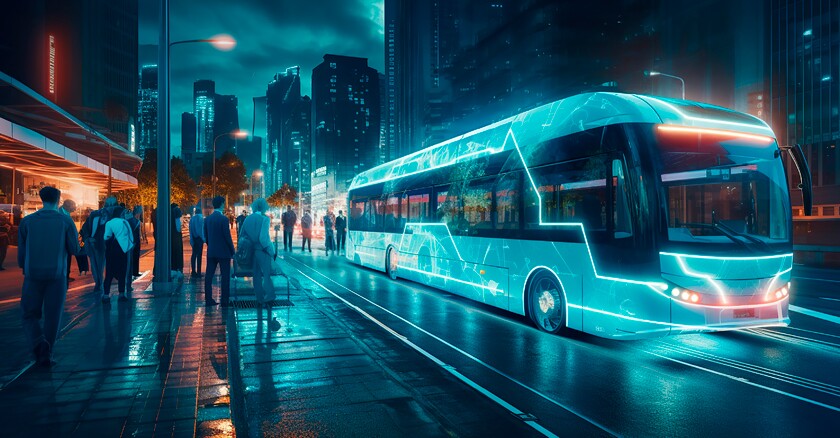More than 20 percent of new vehicle sales in California are now electric, a statistic that seems to grow every month. Other states like Washington, Oregon, Colorado, New York, and even oil and gas industry heavyweights like Texas, are seeing strong growth in electric cars. And it’s not just cars losing the internal combustion engine: Buses and other vehicles are transitioning as well. Clean, emissions-free school buses are being introduced at school districts across the country, funded in part by a $5 billion U.S. Environmental Protection Agency program.
Electric bikes are also a growing presence on city streets. Cities like Denver and Washington, D.C., have stood out for their incentive programs aimed at helping residents purchase an e-bike. The incentives are uniquely structured to ensure additional support for income-qualified applicants. Similarly, the micromobility industry has bounced back from its COVID-19 slump, with ridership now reaching pre-pandemic levels. E-bikes are hot here, too, with data showing they made up nearly 31 million micromobility trips in 2022; the number of e-bikes available for rent increased 71 percent.
However, if the shift to electrification in transportation is moving in the fast lane, mode shifts toward public transit, cycling and other forms of mobility seen as more sustainable have been slow to catch on. This has prompted experts to urge new thinking around how streets are designed, so they include biking and pedestrian infrastructure, as well as policies around land use to cluster high-density housing near transit stops.
For all the fits and starts autonomous technology has experienced the last few years, 2023 turned out to be the year the technology began emerging more forcefully as a true commercial mobility option. Most notably, the California Public Utilities Commission agreed to allow Waymo and Cruise to expand their autonomous taxi operations in San Francisco, clearing the way for both companies to operate driverless taxi services for paying customers. Meanwhile, the firms are both engaged in expansions in cities like Phoenix; Austin, Texas; and even Raleigh, N.C.
Driverless taxis aren’t the only transportation technology surfacing on city streets. Jurisdictions are turning to tech to help them manage curbsides and parking, putting to use new tools like curb data specifications, as used by a new project in Seattle, and real-time parking technology that takes the mystery out of searching for a space.
These developments come even as cities have seemed to cool to the idea of handing over their public spaces — and the data they might generate — to big tech companies in the name of smart city swagger. When the much-hyped Quayside project in Toronto — a dream of Sidewalk Labs — collapsed in 2020, there was a sense that maybe the smart city Champagne had become a bit flat.
But there’s energy elsewhere. Cities have taken a look around and seen a homeless crisis indisputably tied to a housing shortage. There is also new momentum around ensuring social justice and equity are at the center of transportation planning, as cities like Austin have put forward transit plans with special attention paid to land use planning and community engagement.
The intersection between technology and transportation is certainly trending toward electrification. But what's also emerging is a more holistic view of the role of mobility as a reflection of the goals cities have to remake themselves as more livable and pluralistic places that better serve all residents.
Click here to read the rest of our 2023 Year in Review coverage.
This story originally appeared in the December issue of Government Technology magazine. Click here to view the full digital edition online.















